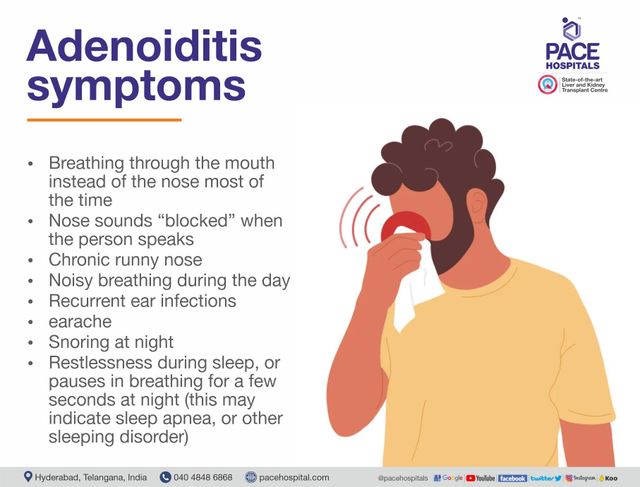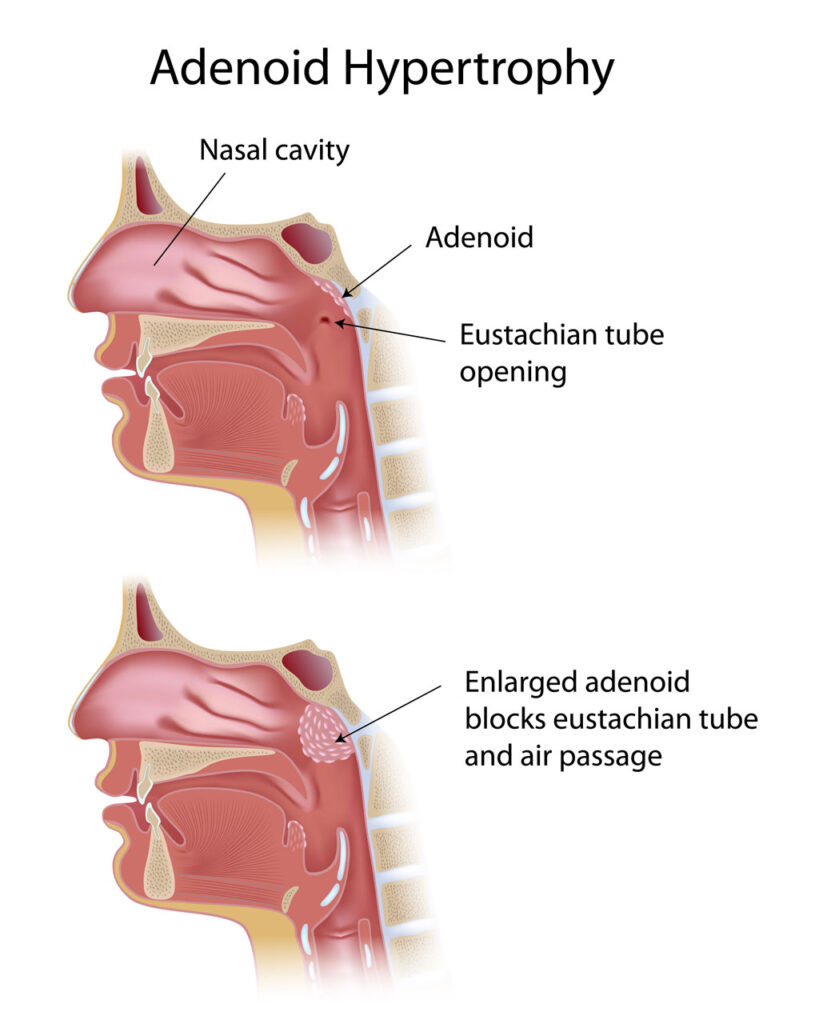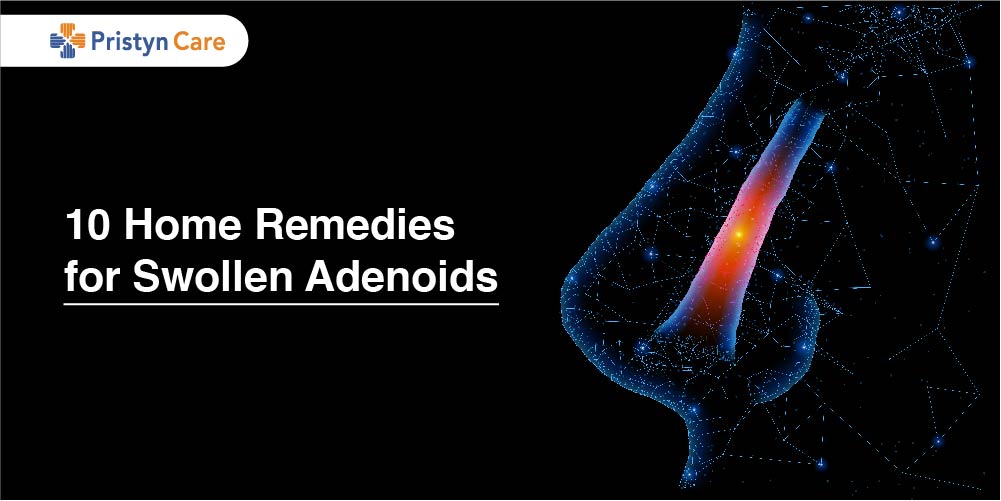You may not give much thought to your adenoids, but these small, soft tissues located in the back of your throat play a vital role in your overall health. Adenoiditis, the inflammation of the adenoids, can lead to a range of uncomfortable symptoms and potentially serious complications if left untreated. In this article, we will explore the prevention and treatment options available for adenoiditis, helping you understand how to keep your adenoids healthy and promote a strong immune system. So, let’s dive into the world of adenoiditis and discover the best ways to take care of these often-overlooked guardians of our health. Adenoiditis is a condition characterized by the inflammation of the adenoid tissues, commonly found in the back of the throat. In this article, we will explore the causes, symptoms, diagnosis, and treatment options for adenoiditis. We will also discuss preventive measures, post-operative care, complications, home remedies, and alternative therapies. By understanding these different aspects of adenoiditis, you can better manage and prevent this condition.

Causes of Adenoiditis
Adenoiditis can be caused by various factors, including bacterial or viral infections, allergies, and tonsillitis.
Bacterial infections are one of the primary causes of adenoiditis. Bacteria such as Streptococcus pyogenes or Staphylococcus aureus can infect the adenoid tissues, leading to inflammation and subsequent symptoms.
Viral infections, such as the common cold or flu, can also trigger adenoiditis. These infections weaken the immune system, making the adenoid tissues more susceptible to inflammation.
Allergies, specifically respiratory allergies like hay fever, can contribute to the development of adenoiditis. When exposed to allergens such as pollen or dust, the adenoid tissues may become irritated and inflamed.
Tonsillitis, the inflammation of the tonsils, can also cause adenoiditis. The proximity of the adenoid tissues to the tonsils makes them more vulnerable to infection and inflammation.
Symptoms of Adenoiditis
Recognizing the symptoms of adenoiditis is crucial for early detection and appropriate treatment. Common symptoms of adenoiditis include nasal congestion, sore throat, enlarged adenoids, and breathing difficulties.
Nasal congestion is a prevalent symptom of adenoiditis. It occurs when the adenoid tissues become inflamed and block the nasal passages, causing difficulty in breathing through the nose.
A sore throat is another symptom of adenoiditis. The inflammation of the adenoid tissues can lead to throat discomfort, pain, and hoarseness.
Enlarged adenoids are often observed in individuals with adenoiditis. The adenoids swell due to the inflammation and can be seen at the back of the throat during a physical examination.
Breathing difficulties, particularly during sleep, can also occur as a result of adenoiditis. The swollen adenoids can obstruct the airway, leading to snoring, sleep disturbances, and in severe cases, obstructive sleep apnea.

Diagnosis of Adenoiditis
To diagnose adenoiditis, healthcare professionals use various methods, including medical history, physical examination, endoscopy, and imaging techniques such as X-rays or CT scans.
During a medical history evaluation, your healthcare provider will ask about your symptoms, their duration, and any previous medical conditions. This information helps in understanding the possible causes and determining the most appropriate treatment approach.
A physical examination allows the healthcare professional to visually inspect the back of the throat to check for enlarged adenoids. They may use a small mirror or a flexible fiber-optic endoscope to get a clearer view of the adenoid tissues.
Endoscopy is a more detailed examination that involves inserting a thin, flexible tube with a light and camera into the nose and throat. This procedure provides a close-up view of the adenoids, enabling the healthcare professional to evaluate their condition accurately.
In some cases, X-rays or CT scans may be required to obtain detailed images of the adenoids. These images can help identify any structural abnormalities or infections and assist in determining the most suitable treatment options.
Preventive Measures for Adenoiditis
Preventing adenoiditis involves adopting certain measures to reduce the risk of infection and inflammation. Vaccinations, good hygiene practices, and avoiding exposure to allergens are key preventive measures.
Vaccinations are an essential preventive measure for adenoiditis. Ensuring that you and your family are up to date with recommended vaccinations, such as the flu vaccine, can help strengthen the immune system and minimize the risk of infections that can lead to adenoiditis.
Good hygiene practices, such as regular handwashing, can significantly reduce the spread of bacteria and viruses. Encourage yourself and your family members to wash hands thoroughly and frequently, especially before meals and after using the restroom.
Avoiding exposure to allergens is another crucial preventive measure. If you or your child has known allergies, take steps to minimize contact with triggers such as pollen, dust mites, or pet dander. Keeping the living environment clean and well-ventilated can help reduce allergen accumulation.
By taking these preventive measures, you can reduce the incidence of adenoiditis and maintain a healthier respiratory system.

Non-surgical Treatment Options for Adenoiditis
Non-surgical treatment options are often the first line of defense for adenoiditis. They aim to alleviate symptoms, reduce inflammation, and resolve the underlying infection. Some non-surgical treatment options include the use of antibiotics, nasal sprays, decongestants, and steroids.
Antibiotics are commonly prescribed to treat bacterial infections that cause adenoiditis. These medications help eliminate the bacteria responsible for the inflammation and alleviate symptoms. It is essential to complete the full course of antibiotics as prescribed by your healthcare provider to ensure the infection is thoroughly treated.
Nasal sprays containing corticosteroids can help reduce nasal congestion and inflammation. These sprays are directly applied to the nasal passages, providing localized relief and facilitating easier breathing.
Decongestants, available in both oral and nasal forms, can provide temporary relief from nasal congestion by shrinking swollen blood vessels. However, it is important to limit the use of decongestants to avoid dependency or rebound congestion.
Steroids, whether administered orally or through nasal sprays, can help reduce inflammation and ease symptoms. They are often recommended for individuals with severe adenoiditis or chronic conditions.
Your healthcare provider will determine the most appropriate non-surgical treatment option based on your specific condition and symptoms.
Surgical Treatment Options for Adenoiditis
In cases where non-surgical treatments do not provide sufficient relief or when adenoiditis becomes recurrent, surgical interventions may be considered. The most common surgical treatment options for adenoiditis include adenoidectomy, adenotonsillectomy, and laser ablation.
Adenoidectomy involves the surgical removal of the adenoid tissues. This procedure is commonly performed when adenoiditis is severe, recurrent, or when it obstructs the airway, resulting in significant breathing difficulties. Adenoidectomy can often be performed alongside tonsillectomy, known as adenotonsillectomy, especially if tonsillitis is also present.
Laser ablation is a less invasive procedure that utilizes laser technology to shrink and reduce the size of the adenoid tissues. This technique is suitable for individuals with mild to moderate adenoiditis, and it offers a quicker recovery time compared to traditional surgical methods.
The choice of surgical treatment option depends on various factors, including the severity and recurrence of adenoiditis, the presence of other conditions, and the individual’s overall health. Your healthcare provider will determine the most appropriate surgical intervention for your specific case.

Post-operative Care after Adenoid Surgery
After undergoing adenoid surgery, proper post-operative care is crucial for a successful recovery. The following recommendations can help ensure a smooth healing process and minimize complications:
Pain management is an essential aspect of post-operative care. Your healthcare provider may prescribe pain relievers to manage any discomfort or soreness. It is important to follow the prescribed dosage and frequency to effectively control pain.
Rest and recovery are critical during the healing process. Make sure to allow yourself or your child sufficient time to rest and avoid strenuous activities that may interfere with the healing of the surgical site.
Fluid intake is vital to stay hydrated and promote healing. Encourage yourself or your child to drink plenty of fluids, such as water, to aid in the recovery process. Cold fluids or soft, soothing foods may provide additional relief during the initial days following surgery.
Follow-up appointments with your healthcare provider are necessary to monitor the healing progress and address any concerns or complications that may arise. Attend all scheduled appointments and report any unusual symptoms or difficulties during the recovery period.
By adhering to these post-operative care instructions, you can support a smooth recovery and reduce the risk of complications.
Complications of Adenoiditis
If left untreated or inadequately managed, adenoiditis can lead to various complications. It is important to be aware of these potential complications and seek appropriate medical attention if needed.
Recurrent infections are one of the most common complications of adenoiditis. Despite initial treatment, adenoid tissues may become infected again, leading to further episodes of inflammation and discomfort.
Obstructive sleep apnea is a potential complication of adenoiditis, particularly in children. The swollen adenoids can obstruct the airway during sleep, resulting in heavy snoring, interrupted breathing, and fragmented sleep patterns. If left untreated, obstructive sleep apnea can have long-term impacts on overall health and quality of life.
Middle ear infections, also known as otitis media, can occur as a result of adenoiditis. The adenoids and the eustachian tubes, which regulate pressure in the middle ear, are closely connected. Inflammation of the adenoids can cause blockage or dysfunction of the eustachian tubes, leading to middle ear infections.
If you or your child experience recurrent infections, sleep disturbances, or middle ear infections, it is important to consult with a healthcare professional for proper evaluation and management.

Home Remedies for Adenoiditis
In addition to medical treatments, certain home remedies may provide relief from adenoiditis symptoms and support the healing process. However, it is important to note that home remedies should not replace medical advice or treatment. Always consult with a healthcare professional before trying any home remedies. Here are some home remedies commonly recommended for adenoiditis:
Steam inhalation: Inhaling steam from a bowl of hot water or using a humidifier can help alleviate nasal congestion and soothe irritated tissues. Adding a few drops of essential oils like eucalyptus or tea tree oil may provide additional benefits.
Warm salt water gargles: Gargling with warm salt water can help reduce throat inflammation and relieve discomfort. Mix half a teaspoon of salt with warm water and gargle several times a day.
Proper hydration: Staying well-hydrated is essential for overall health and recovery. Drink plenty of water to keep the body hydrated and facilitate healing.
Tea tree oil: Diluted tea tree oil applied to the skin around the throat may help reduce inflammation and disinfect the area. However, it is important to use tea tree oil cautiously and consult with a healthcare professional for proper guidance.
While these home remedies may provide temporary relief, it is important to consult with a healthcare professional to ensure they are appropriate for your specific condition and symptoms.
Alternative Therapies for Adenoiditis
In addition to conventional medical treatments, some individuals may explore alternative therapies for adenoiditis. It is important to approach alternative therapies with caution and consult with a healthcare professional before trying them. Here are a few alternative therapies that some individuals may consider:
Acupuncture: Acupuncture involves the insertion of thin needles into specific points on the body to stimulate healing and relieve symptoms. Some individuals find acupuncture helpful for managing the symptoms of adenoiditis, although scientific evidence supporting its efficacy is limited.
Herbal remedies: Certain herbs, such as echinacea or goldenseal, are believed to boost the immune system and alleviate the symptoms of adenoiditis. However, the effectiveness and safety of herbal remedies vary, and it is essential to consult with a healthcare professional before using any herbal supplements.
Probiotics: Probiotics are beneficial bacteria that can support immune system function. Some studies suggest that probiotics may help prevent upper respiratory infections and reduce the severity of symptoms. Consult with a healthcare professional for appropriate probiotic supplementation.
Chiropractic care: Chiropractic adjustments, particularly in the upper cervical spine, may help alleviate symptoms associated with adenoiditis. Chiropractors aim to restore proper nerve function, which can support the immune system and improve overall health. However, further research is needed to fully understand the effectiveness of chiropractic care for adenoiditis.
It is important to approach alternative therapies with an open mind while also prioritizing evidence-based, conventional medical treatments. Always consult with a healthcare professional for proper guidance and to ensure the safety and appropriateness of alternative therapies.
Adenoiditis is a condition that can cause significant discomfort and impact daily life. By understanding the causes, symptoms, diagnosis, and treatment options for adenoiditis, you can take proactive steps to manage and prevent this condition. Remember to consult with a healthcare professional for proper evaluation, guidance, and personalized treatment recommendations. With the right approach, you can effectively address adenoiditis and maintain a healthier respiratory system.
Watch This Video Below
Related Terms About Prevention and Treatment of Adenoiditis
Adenoid Treatment Without Surgery, Adenoiditis Treatment Guidelines, How To Cure Adenoids Without Surgery, How To Heal Swollen Adenoids Naturally, Symptoms Of Adenoiditis In Child, Symptoms Of Adenoids In Toddler, Symptoms Of Chronic Adenoiditis, Treating Adenoids Without Surgery, Treatment Of Adenoiditis, Treatment Of Adenoiditis Ppt